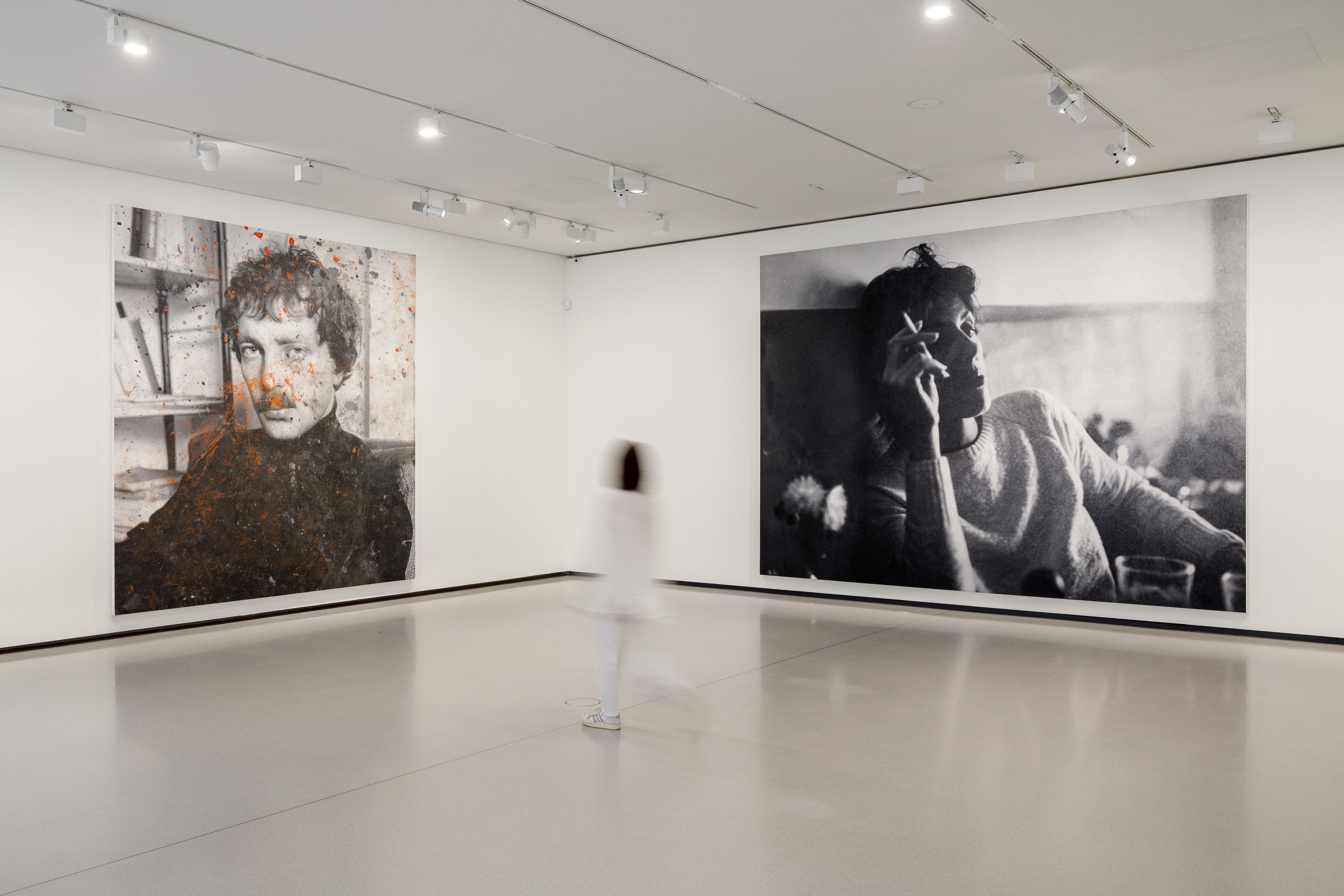Rudolf Stingel

Here, Rudolf Stingel presented three portraits, straddling Europe and America, his own personal history and the history of art. The first depicts his New-York gallery representative Paula Cooper, an indefatigable pioneer and defender of the avant-garde; the second shows his friend, Austrian artist Franz West; and the last, dressed in a soldier’s uniform, painter Ernst Ludwig Kirchner, an eminent historical figure of German Expressionism.
Painted from small format photographs that the artist dramatically enlarges without erasing the roughness, defects, blurring or signs of aging, these images are faithfully transposed via the painting. The illusion blurs the connection between the media so that a personal snapshot, a found photograph or a simple piece of ID is transformed into a monumental portrait.
Rudolf Stingel (b. 1956) has made painting his preferred medium of expression. It is also the subject and mode of his work. Between abstraction and figuration, Stingel explores, challenges and redefines the limits of his art, by experimenting with new frameworks, styles and authors. Through his work on and in painting, a reflection on memory and time takes place, marked by the motif of the vanitas, a pictorial theme par excellence. Since Instructions (1989), a user’s manual to perfectly produce "a Stingel" like those produced by the artist, his work has never ceased to question the dividing line between artist and creator, and the supposed spectator and amateur. In 2001, he began a series of works in Celotex insulating material, upon which visitors were invited to paint, draw and write. From 1991 onwards, Stingel began to cover entire rooms with painted rugs, doing away with the limits of the frame, now metamorphosed into an environment. In his monographic exhibition at the Palazzo Grassi in 2013, this protocol transformed the space: he covered the walls and floors with oriental carpets creating a monumental backdrop upon which photorealistic grisaille paintings were hung sparingly, thereby showing a more figurative and traditional facet of his work, surpassing the limits of the categories usually applied to painting.
Stingel’s work constitutes a conceptual exploration of the process of painting, which sometimes includes the human figure, or sometimes borrows more from abstraction. This approach may be said to provide a clue as to the way in which the Pinault Collection has been constructed. It is a balance between the minimal dimension — in the broadest sense of the term, from the European and American avant-gardes of the 1960s and 1970s to the diversity of contemporary practices — and a deeply “existential” dimension, anchored in political and social realities and questions of identity, asserting the registers of expressiveness, empathy and tragedy.